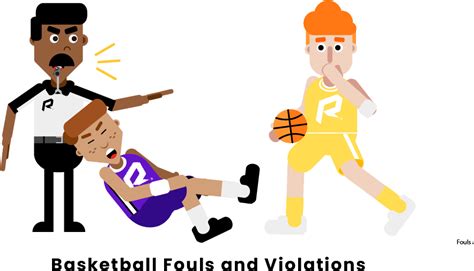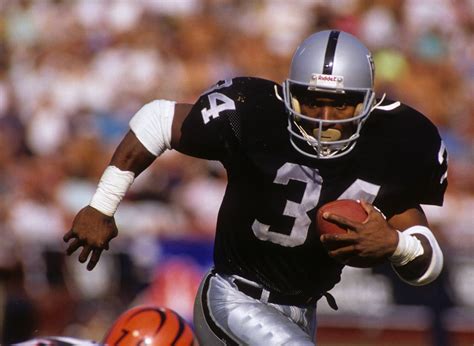
The NBA is finally eliminating the “take foul,” a move long sought by fans and players alike for its detrimental impact on the flow and excitement of the game. The NBA Board of Governors approved the rule change that penalizes teams for quickly fouling to prevent transition opportunities, starting with the upcoming 2024-25 season. This alteration aims to reduce stoppages and reward fast-paced offensive play, addressing a strategic tactic widely considered to be an aesthetic blight on professional basketball.
The new rule, a point of discussion and potential adoption for several years, directly targets instances where defenders initiate contact away from the ball to halt fast breaks. Previously, these intentional fouls only resulted in the fouled team retaining possession. Now, such fouls will be penalized with one free throw and continued possession for the offended team, similar to the penalty for clear-path fouls. NBA Commissioner Adam Silver believes this change will result in a “more fluid and exciting game.”
The Genesis of the Change: Addressing a Growing Problem
The impetus for this rule change stems from a growing trend within the NBA: the strategic use of the take foul. Coaches and players had increasingly adopted this tactic as a calculated means of disrupting opponents’ transition offense, essentially sacrificing a possession to prevent potentially higher-value scoring opportunities. While strategically sound, this practice had a significant negative impact on the viewing experience. Games were frequently interrupted by these intentional fouls, leading to a fragmented and less engaging flow.
Data analysis revealed a clear correlation between the rise of the take foul and a decrease in the overall pace and excitement of NBA games. Teams were effectively incentivized to commit these fouls, as the potential benefits (preventing easy baskets) outweighed the minimal penalty (simply giving the ball back). This led to a cycle of intentional fouls, frustrating players, coaches, and fans alike.
“It became clear that the take foul was detracting from the game,” said Monty McCutchen, the NBA’s Senior Vice President, Head of Referee Development and Training, in a statement after a similar rule change was implemented in the G League. “It was slowing down the pace, and it wasn’t in the spirit of the game.”
The New Rule: A Detailed Examination
Under the newly adopted rule, a take foul is defined as a foul committed by a defender who is not making a legitimate play on the ball and is instead intentionally making contact with the offensive player to stop the team’s transition opportunity. The key elements of this definition are:
- No Legitimate Play on the Ball: The defender’s primary intention must be to foul the player, not to contest the shot or make a play on the ball. This is a crucial distinction, as it prevents the rule from being applied to genuine defensive efforts.
- Intentional Contact: The contact must be deemed intentional, meaning the defender is actively seeking to make contact with the offensive player. Incidental contact that occurs during a legitimate defensive play would not be considered a take foul.
- Stopping Transition: The foul must be committed to stop the offensive team’s transition opportunity, meaning the team is pushing the ball up the court in an attempt to score quickly before the defense can fully set up.
When a take foul is called, the following penalties will be applied:
- One Free Throw: The offensive team will be awarded one free throw, which can be taken by any player on the court at the time of the foul.
- Continued Possession: After the free throw is taken, the offensive team will retain possession of the ball, allowing them to continue their offensive set.
This penalty structure is designed to deter teams from committing take fouls. The combination of a free throw and continued possession provides a significant advantage to the offensive team, making it less appealing to intentionally foul and disrupt the flow of the game.
Implementation and Enforcement
The NBA has emphasized the importance of proper implementation and enforcement of the new rule. Referees will be provided with extensive training and guidance to ensure consistent application of the rule across all games. The league will also closely monitor the impact of the rule change and make adjustments as needed.
One potential challenge in enforcing the rule is determining the defender’s intent. Referees will need to carefully assess the circumstances surrounding each foul, considering factors such as the defender’s positioning, the speed of the play, and the nature of the contact. Video replay may be used in some cases to help referees make accurate calls.
To assist referees in making these determinations, the NBA plans to release detailed guidelines and examples of what constitutes a take foul. These guidelines will be shared with teams, players, and coaches to ensure everyone understands the rule and how it will be enforced.
Previous Attempts and Iterations
The NBA’s decision to eliminate the take foul is not an isolated event. The league has experimented with various rule changes and adjustments over the years in an effort to improve the pace and flow of the game.
The G League, the NBA’s developmental league, served as a testing ground for the take foul rule. The rule was implemented in the G League during the 2021-22 season, and the results were encouraging. The number of take fouls decreased significantly, and the overall pace of games improved. This success in the G League provided the NBA with valuable data and insights, ultimately paving the way for the rule change at the NBA level.
Reactions from Players, Coaches, and Fans
The elimination of the take foul has been met with widespread approval from players, coaches, and fans. Many have expressed their frustration with the tactic in the past and believe that the rule change will make the game more enjoyable to watch.
“It’s a good rule,” said LeBron James in a past interview discussing the potential change. “It’s going to make the game more free-flowing.”
Coaches have also voiced their support for the rule change, recognizing that it will force teams to be more creative and strategic on defense.
“I think it’s a positive step,” said Steve Kerr, coach of the Golden State Warriors. “It will encourage teams to play better defense and be more aggressive.”
Fans have been particularly vocal in their support of the rule change. Many have taken to social media to express their excitement and anticipation for the upcoming season. The consensus is that the elimination of the take foul will make the game more exciting, fast-paced, and entertaining.
Potential Impact on Game Strategy
The elimination of the take foul is likely to have a significant impact on game strategy. Teams will no longer be able to rely on the take foul as a way to disrupt opponents’ transition offense. This will force them to develop new defensive strategies and approaches.
One potential consequence is that teams may be more aggressive in their attempts to prevent transition opportunities. They may try to pressure the ball more, force turnovers, and prevent the opposing team from getting out in transition in the first place.
Another possibility is that teams will focus more on developing their half-court defense. If they can’t rely on the take foul to stop fast breaks, they will need to be more effective at defending in the half-court.
The elimination of the take foul may also lead to an increase in scoring. With fewer stoppages and more opportunities for fast breaks, teams may be able to score more points. This could make the game more exciting and appealing to fans.
Long-Term Implications and Future Adjustments
The elimination of the take foul is a significant step towards improving the flow and excitement of NBA games. However, it is unlikely to be the last rule change. The NBA is constantly evaluating its rules and making adjustments as needed to ensure the game remains competitive, entertaining, and fair.
One potential area for future adjustment is the enforcement of the rule. As referees gain more experience with the rule, they may need to refine their approach to determining intent and applying the penalties. The league may also need to provide additional training and guidance to referees to ensure consistent application of the rule across all games.
Another potential area for future adjustment is the penalty structure. The NBA may need to consider whether the current penalty (one free throw and continued possession) is sufficient to deter teams from committing take fouls. If the rule is not effective in reducing the number of take fouls, the league may need to increase the penalty.
The Rule’s Broader Context in Sports
The debate surrounding the take foul and its elimination reflects a broader conversation in sports about the balance between strategy and entertainment. In many sports, coaches and players are constantly seeking new ways to gain an advantage, even if those tactics detract from the overall viewing experience. The NBA’s decision to eliminate the take foul is a clear signal that the league prioritizes entertainment and is willing to sacrifice some strategic advantages in order to make the game more enjoyable for fans.
This decision also highlights the importance of data analysis in modern sports. The NBA’s decision to eliminate the take foul was based in part on data that showed a clear correlation between the rise of the take foul and a decrease in the overall pace and excitement of games. This data-driven approach is becoming increasingly common in sports, as teams and leagues seek to make informed decisions based on objective evidence.
Conclusion
The elimination of the take foul is a welcome change for NBA fans, players, and coaches alike. It promises to create a more fluid, exciting, and entertaining game by removing a strategic tactic that had become an unwelcome disruption. While the long-term impact of the rule change remains to be seen, the initial reaction has been overwhelmingly positive. The NBA has demonstrated a commitment to improving the viewing experience and ensuring that the game remains one of the most exciting and popular sports in the world. By prioritizing entertainment and addressing a growing problem, the NBA has taken a significant step towards enhancing the overall quality of its product. This change also underscores the league’s willingness to adapt and evolve in response to the changing needs and desires of its audience. The upcoming season will be a crucial test of the rule’s effectiveness, but the initial signs suggest that the NBA is on the right track.
Frequently Asked Questions (FAQ)
1. What exactly is a “take foul” in the context of the new NBA rule?
A “take foul,” according to the new NBA rule, is a foul committed by a defender who is not making a legitimate play on the ball and intentionally makes contact with an offensive player to stop the team’s transition opportunity. The key is the defender’s intent to foul and halt the fast break, rather than a genuine attempt to contest the play.
2. What is the penalty for committing a take foul under the new rule?
When a take foul is called, the offensive team will be awarded one free throw (taken by any player on the court at the time of the foul) and will retain possession of the ball after the free throw.
3. Why did the NBA decide to eliminate the take foul?
The NBA eliminated the take foul because it was deemed detrimental to the flow and excitement of the game. It had become a strategic tactic used to disrupt opponents’ transition offense, leading to frequent stoppages and a less engaging viewing experience. Data analysis also revealed a correlation between the rise of the take foul and a decrease in the overall pace of NBA games.
4. How will referees determine if a foul is a “take foul” versus a legitimate defensive play?
Referees will assess the circumstances surrounding each foul, considering factors such as the defender’s positioning, the speed of the play, and the nature of the contact. The key is whether the defender is making a legitimate attempt to play the ball or is intentionally fouling to stop the transition. Video replay may be used in some cases. The NBA will also provide guidelines to referees, teams and players.
5. Will this new rule significantly change NBA game strategy?
Yes, it is likely to change game strategy. Teams can no longer rely on take fouls to disrupt transition offense. This could lead to more aggressive attempts to prevent transition opportunities, a greater focus on half-court defense, and potentially an increase in scoring due to fewer stoppages and more fast-break opportunities. The extent of the change will be observed closely in the upcoming season.









